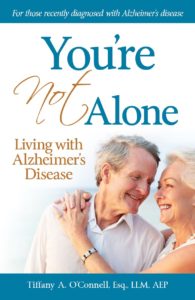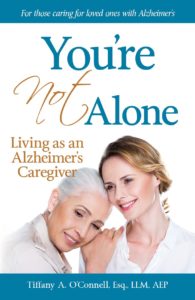November 2021
 |
|
|
|
|
|
|
What is the Medicaid
Look-Back Period? |
|
Medicaid can pay for the long-term institutional care of individuals who meet certain income and asset requirements. However, if the applicant's assets and income exceed these limits, he or she may not qualify for Medicaid assistance until the limits are met. Given the high cost of long-term care, people sometimes try to give away their assets before applying for Medicaid in order to become eligible. Of course, state Medicaid agencies want to prevent this, so they require the applicant to disclose all financial transactions made in the last five years. (California is an exception and only requires disclosure of financial transactions made in the last 30 months.)
This five-year period is known as the "look-back period." In essence, state Medicaid agencies are "looking back" for assets transferred at less than fair market value. If the state Medicaid agency determines that such a transfer was made, it will impose a "penalty period." And what is the penalty? It is a period of time during which the applicant will be deemed ineligible for Medicaid. The penalty period is calculated by dividing the amount the applicant has transferred by the state's average cost for private pay institutional care.
Any asset transfer can be scrutinized, regardless of size. Exceptions are not made for gifts to children or grandchildren, charitable donations, or other transfers that seem like "no big deal." Similarly, informal payments to caregivers or loans to family members can raise red flags. In short, the applicant is considered guilty until proven innocent. The burden of proof lies with the applicant.
It is worth noting that transferring assets to certain recipients will not trigger a penalty period. These recipients include a spouse (or a transfer to someone else if it is for the benefit of the spouse); a trust for the sole benefit of a disabled or blind child; and a trust for the sole benefit of a disabled individual under age 65. The applicant's home can also be transferred to these recipients without penalty, as well as to all of the following individuals:
|
|
|
- A child under the age of 21
- A blind or disabled child
- A "caretaker child" who resided in the home for two years or more before the applicant required institutional care, and whose care permitted the applicant to delay his or her move to a long-term care facility
- A sibling who lived in the home during the year preceding the applicant's move to the institution and who has equity in the property
|
|
|
|
With proper planning it is possible to protect your assets against the transfer penalty. Even if you have already made asset transfers in the last five years and will be applying for Medicaid soon, we may still be able to protect a portion of your life savings.
|
|
|
|
What Women Need to Know about Social Security
While Social Security is a crucial component of many Americans' retirement income, it is particularly important to women. According to the National Committee to Preserve Social Security and Medicare, 48 percent of elderly unmarried women relied on Social Security for 90 percent or more of their total income in 2017.
|
|
|
|
The Social Security Administration (SSA) has written a booklet detailing what women should know about Social Security. Here are the highlights:
Nothing keeps women from getting their own Social Security benefits
- If you've worked and paid taxes into the Social Security system for at least 10 years, and have earned a minimum of 40 work credits, you can collect your own benefits as early as age 62
- Social Security benefits are based on your lifetime earnings. SSA adjusts (or "indexes") your actual earnings to account for changes in average wages since the year the earnings were received. Then, SSA calculates your average indexed monthly earnings during the 35 years in which you earned the most. SSA applies a formula to these earnings and arrives at your basic benefit, which is called your "primary insurance amount"
- If you become disabled before your full retirement age, you might qualify for Social Security disability benefits if you've worked and paid Social Security taxes in five of the last ten years
- If you receive a pension from a job where you didn't pay Social Security taxes, such as a civil service or teacher's pension, your Social Security benefit might be reduced
There is no "marriage penalty"
- If you are married and both you and your spouse have worked and earned enough credits individually, you can each receive your own Social Security benefit. For example, if you are due a Social Security benefit of $1,200 per month and your spouse is due a Social Security benefit of $1,400 per month, you can receive $2,600 per month in retirement benefits
If you're due two benefits, you generally receive the higher rate, not both
- As a spouse, if you are eligible for benefits based on both your own work record and that of your spouse, you may be required to file for both benefits. If so, you generally receive the higher benefit amount
- A wife with no work record or a low benefit entitlement on her own work record is eligible for between one-third and one-half of her spouse's Social Security benefit
- Most working women who reach retirement age receive their own Social Security benefit because it's more than one-third to one-half of the husband's rate
- If your spouse dies before you do, you can apply for the higher widow's rate. (You'll find more information about that below)
If you are divorced but were married for at least 10 years, you may be eligible for some of your ex's Social Security
- Divorced women who were married for at least 10 years may be eligible for Social Security based on their ex-spouse's record. This applies only if you are unmarried and not entitled to a higher benefit on your own record when you become eligible for Social Security
- Some women sign divorce decrees relinquishing their rights to Social Security on their ex-spouse's record. However, clauses like these in divorce decrees are rarely enforced
- Benefits paid to a divorced spouse DO NOT reduce payments made to the ex or any payments due the ex's current spouse
- Generally, the payment rules that apply to divorced wives and widows are the same as the rules that apply to current wives and widows. This means most divorced women collect their own Social Security while the ex is alive, but they can then apply for higher widow's rates when the ex dies
When your ex dies, you may be due a widow's benefit
- Widows are eligible for between 71 percent (at age 60) and 100 percent (at full retirement age) of what their spouse was getting before the spouse passed away
- SSA must pay your own retirement benefit first, then supplement it with whatever extra benefits you are due as a widow to take your Social Security benefit up to the widow's rate
- SSA also can pay you a $255 one-time death benefit if you were living with your spouse when your spouse died
- If you made more money than your spouse (or ex-spouse), then your spouse might be due a survivor's benefit if you die before your spouse does
|
|
|
|
|
Upcoming Events |
 |
Protecting Your Kids with Estate Planning
Wednesday, December 1 5:00 PM - 6:00 PM
Wills v. Trusts
Wednesday, December 29 5:00 PM - 6:00 PM
Register today to reserve your spot for these webinars.
Additionally, registration for these events is critical so that we can contact you if it is prudent to cancel this session or if we need to change how we are able to offer this to you.
|
| Register Now |
|
|
A Personal Note From Tiffany |
 |
|
|

Back in 1983, when President Ronald Reagan designated November as National Alzheimer’s Disease Awareness month, there were fewer than 2 million Americans recognized as having Alzheimer’s. Today, there are over 5.5 million Americans with the disease. In fact, it is expected that by 2050, there will be an estimated 14 million Americans diagnosed with Alzheimer’s. With these staggering numbers, and being National Alzheimer’s Disease Awareness month, we at O’Connell Law feel it is our continued duty to help spread awareness about this disease and be a resource for those dealing with Alzheimer’s and other dementias.
We’ve encountered too many people who are dealing with Alzheimer’s or other dementias feeling lost and alone. You aren’t. Our guidance to you is that if you have a diagnosis, are worried about one, or if you are the caregiver of someone diagnosed with some form of dementia, planning as early as possible is essential. To help with that, don’t forget that we’ve put together some very short books to help you plan for the progression of this disease and also serve as a resource guide. We are happy to send a book to you. All you have to do is go to our website at OConnellLawGroup.com or give us a call at 508-202-1818.
In the meantime, please enjoy this month’s newsletter. As always, thank you for taking the time to read and reflect!
|
|
|
Order Our Complimentary Books
|
|
|
 |
|
You're Not Alone — Living with Alzheimer's Disease
Order Here |
|
 |
|
You're Not Alone — Living as an Alzheimer's Caregiver
Order Here |
|
|
Or Call Us at 508-202-1818
|
|
|
 |
|
|